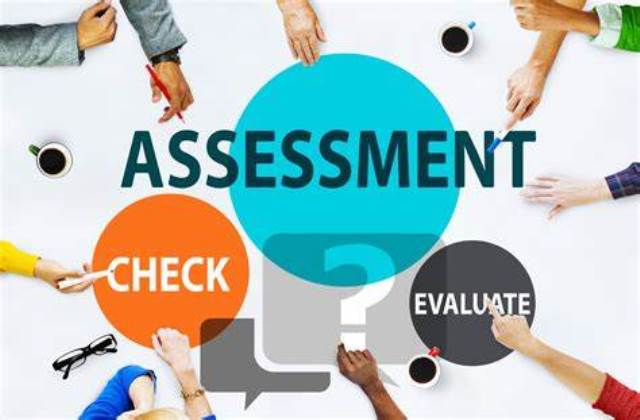For Students
How to Develop Digital Writing Skills
Admin Aug 10, 2022 02:18 PM

TAGS
As a student, you're probably already familiar with the demands of digital writing. Digital writing, which is part of the new digital literacy, is defined as written communication that goes beyond text, is created with the use of technology, and is linked to and made available through a vast network of web-based resources.
The concept of digital writing raises questions about what constitutes writing and highlights the disconnection between how writing is practiced in the real world and how it is taught in schools. In addition to the traditional research paper, the definition of writing in education is expanding to embrace a variety of media. That paper is changing as well, and it may now have embedded links to cited sources and be made available as a PDF download as well as a printed publication. The abilities needed to use these new, technology-driven formats effectively are likewise evolving and can be found in both the classroom and the workplace.
Digital writing is linked to "critical thinking, effective communicating, and engaged citizenship" in a number of ways:
- current knowledge of software packages and technological devices
- ability to collaborate efficiently across spatial obstacles, both asynchronously and synchronously
- ability to create, analyze, and exchange data in a variety of digital formats
- Ability to organize, analyse, and synthesize several streams of data at the same time.
Consider how your online courses use a variety of formats and writing styles to interest you with the themes and contents, as well as to assess your progress toward learning objectives. You are developing abilities not only in composition, but also in the use of technology to create and show what you compose as you complete these tasks, which range from blogs and wikis to threaded debates and portfolio presentations (and sometimes even tweets and status updates). Digital writing differs from traditional paper-based writing, especially in face-to-face settings, mostly because to the technology involved.
Web-based materials can be linked together through hyperlinks, can include a range of media to supplement your written words (e.g., photographs, video, and audio), and can reach a far larger audience than simply your instructor and classmates if they're uploaded on a public website. A digital document may also be altered and updated more easily than a printed copy.
Both learning and teaching are being influenced by the demands of digital writing. It's a compilation of thoughts, insights, and tales about what it's like to teach writing in today's digital, linked world. Instructors and students benefit from insights provided through blog articles and community debates on topics ranging from multimedia authoring tools to copyright interpretation and fair use of digital materials.

Tips for Students for Effective Digital Writing
Writing assignments are likely to appear in your online courses regardless of your academic programme of study, from accountancy to zoology. There are a few other things you can do to acclimatise to the increasingly connected world of digital writing besides brushing up on your grammar and composition abilities.
Investigate the options- Because your lessons are delivered online, you may be able to complete a writing assignment in a variety of methods. Discuss the requirements, as well as what might be allowed, with your professors, and think about how you can put some of the skills you've learned thus far into practice. Is it possible to include a video? Do you want to write a blog post? Using Twitter to gather data and responses? Consider how you may improve your research and writing processes.
Keep it simple and precise- Print and digital content are not the same thing. Because people encounter and read it in different ways - they scan it – you must write it in a different way. Break it down into smaller, more manageable portions with subheadings. Language is most effective when used sparingly, which is especially true online. Write in tabloid-size packages with maximum sentences of 25 words, paragraphs of one phrase, and headlines of four to six words.
Legibility, Spelling and Grammar- It's difficult to read from a screen. It is, in reality, 25% slower than print. Assist your reader. Don't overdo it with the bolding, italicising, and capitalization. Never use underlining to highlight text because it will appear hyperlinked to your reader and can cause confusion. Your message's trustworthiness is harmed by poor spelling and language. Make this a top priority in all of your written correspondence.
To the point and Organized Structure- Is it apparent what you're trying to say? Is it as concise and to the point as it could be while still having an impact? Allowing yourself time to think about your message and returning to it can frequently help you develop this ability. Consider an inverted pyramid when organizing your tasks. The most vital information comes first, followed by a larger basis of detail.
Write to be found (Google yourself!)- Keep the idea of searchability in mind. What words would people use to discover you on Google? In your copy, use those words. Don't overuse the same term to the disadvantage of your writing or promotion, but keep in mind that words in the digital domain transmit your intended message while also assisting new people in finding it.
Keep accessibility in mind- Don't rely solely on graphics in your writing; instead, utilise tags and captions to adequately describe images. Remember to include a thorough description of all hyperlinks. People who receive your messages use a variety of devices to read them, so it's important that your message gets through no matter how or where it's read.
Avoid Spam type mails- Don't make customer emails look like spam by accident. In subject lines, this is very crucial. To avoid having your letter seized by a spam filter, avoid using phrases like "free" or "win." Avoid misspellings, abbreviations, and acronyms, as they are all flagged by spam filters. Consider the words you use and how they will appear in the inbox of your consumer. Would you respond to an email sent to you?
Consider your digital footprint- Though your digital content may be limited to electronic submissions to your Professor or your course site, you may also engage in more publicly visible writing assignments such as blogs and social media profiles. Take the time to learn about the privacy settings of any platform you contribute to – in or out of class – and make sure that whatever you submit – whether it's a simple comment or a lengthy paper – reflects well on you.
As learners, educators, and global citizens, the modes in which we connect with one another are constantly evolving, and the possibilities seem unlimited. As technologies evolve, so are the skills and literacies required to properly use them in a classroom setting. As a result, be cautious with your digital content.
Search
Latest Blogs

Exploring Opportunities in Emerging Engineering field
Admin
Dec 14, 2024 05:18 PM

Navigating College Majors
Admin
Sep 25, 2024 04:04 PM

Tools for Measuring Strengths For Career
Admin
Sep 25, 2024 03:27 PM
Interested in getting latest updates?
SUBSCRIBE


















